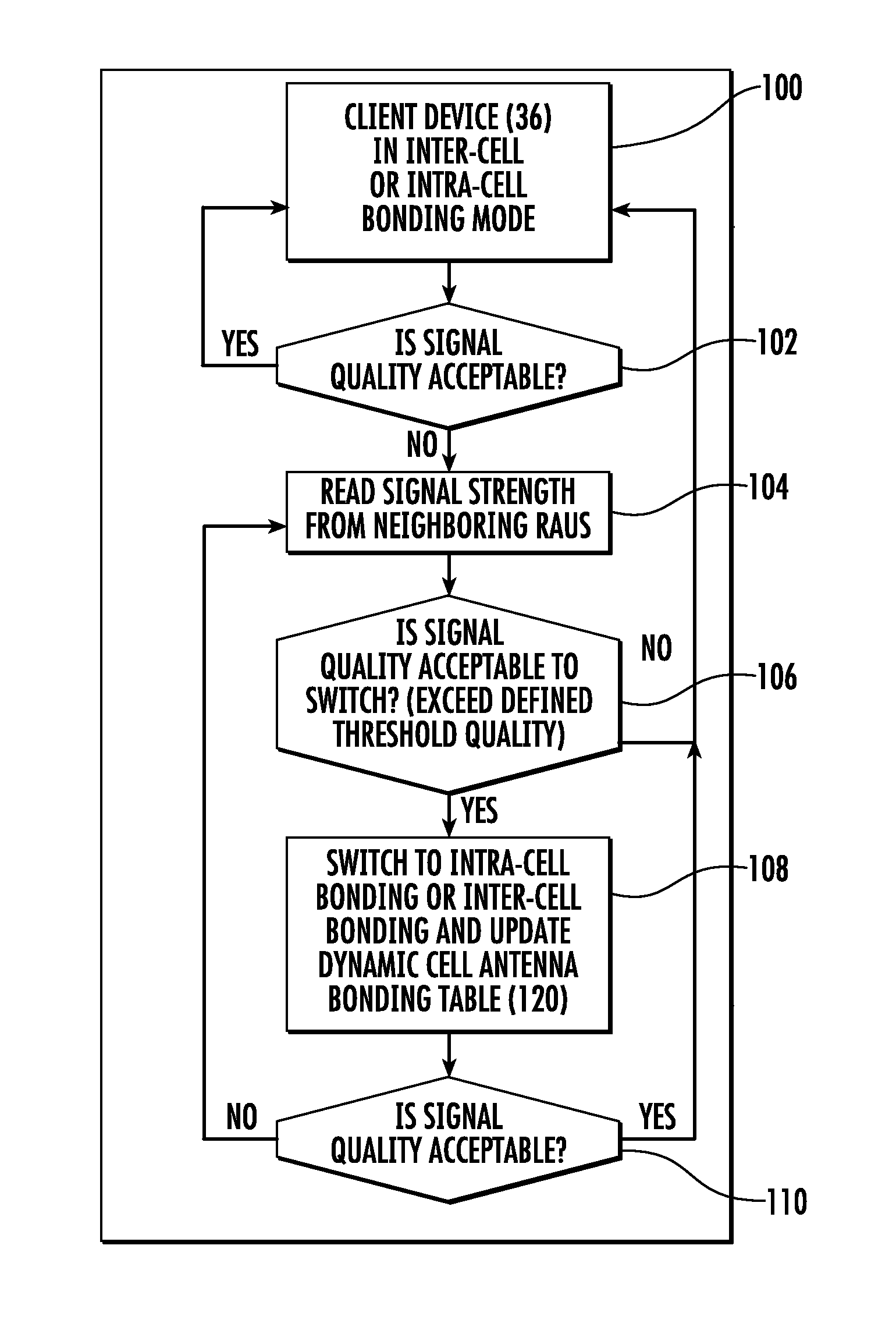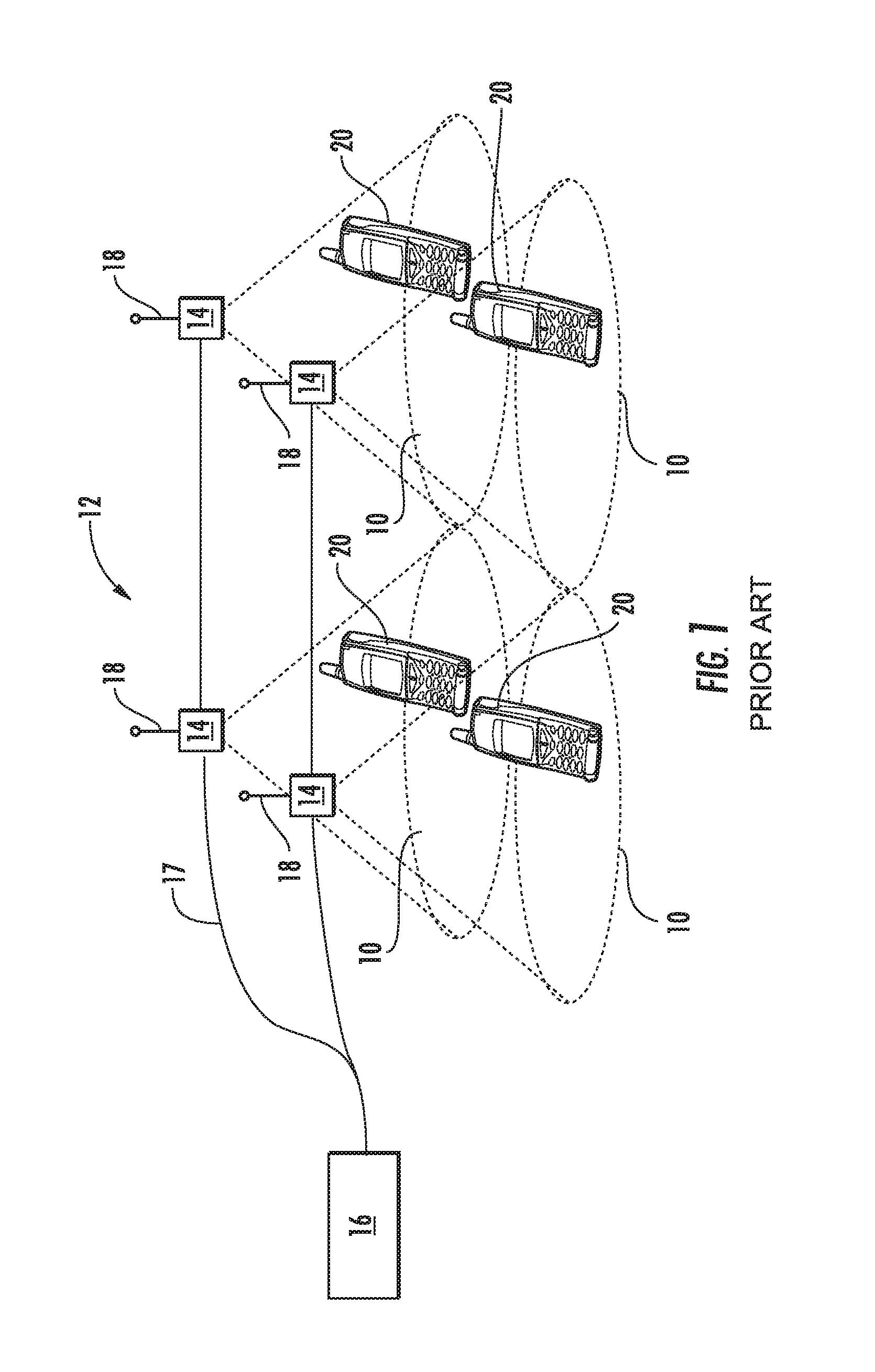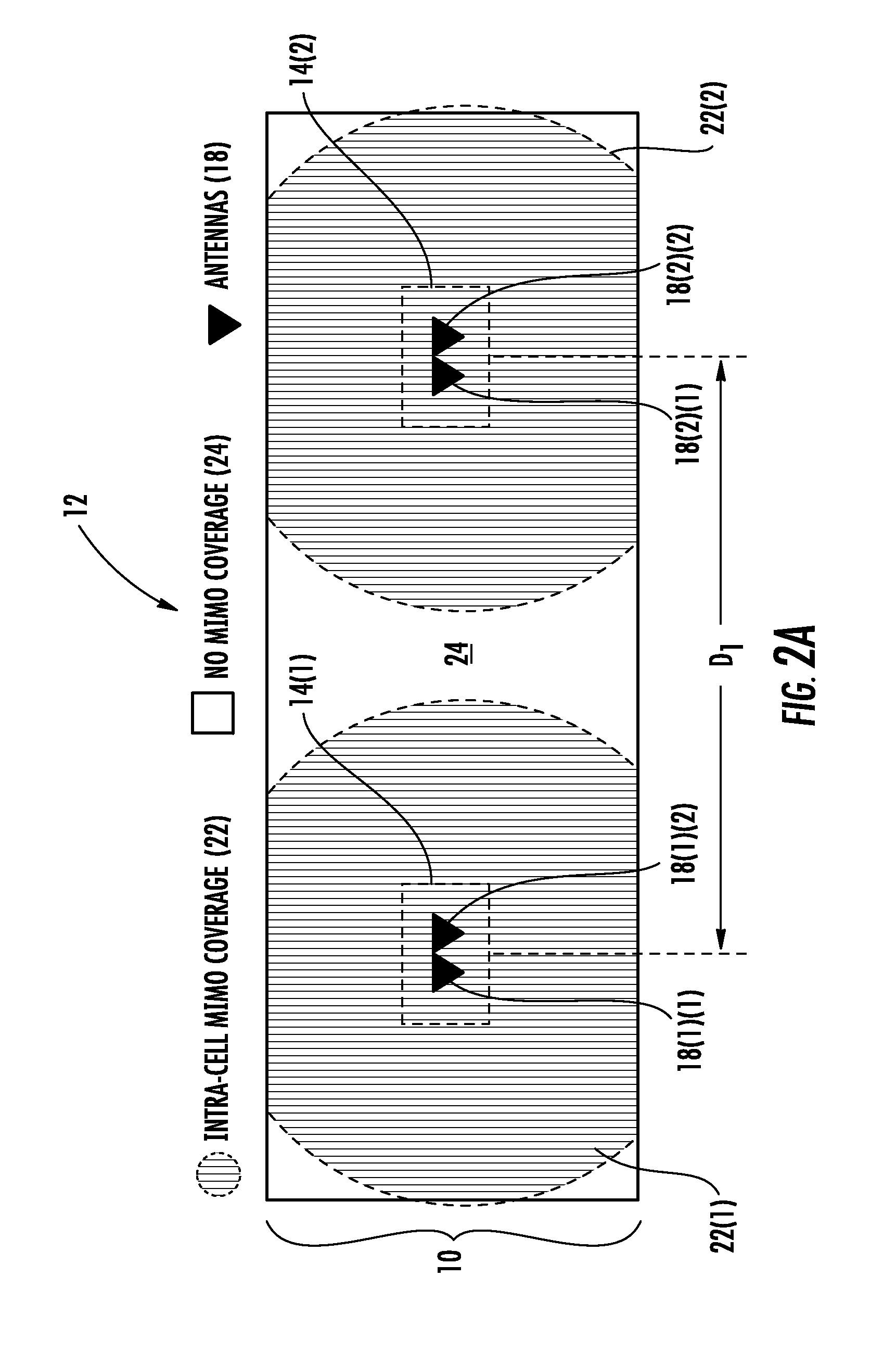Hybrid intra-cell / inter-cell remote unit antenna bonding in multiple-input, multiple-output (MIMO) distributed antenna systems (DASs)
a distributed antenna and remote unit technology, applied in the direction of diversity/multi-antenna systems, site diversity, spatial transmit diversity, etc., can solve the problems of increasing system cost, fading nature of signal propagation, and current mimo distributed communication systems that may not provide uniform coverage areas, so as to increase data throughput and link range, the effect of increasing bandwidth
- Summary
- Abstract
- Description
- Claims
- Application Information
AI Technical Summary
Benefits of technology
Problems solved by technology
Method used
Image
Examples
Embodiment Construction
[0013]Embodiments disclosed herein include hybrid intra-cell / inter-cell remote unit antenna bonding in multiple-input, multiple-output (MIMO) distributed antenna systems (DASs). Related components, systems, and methods are also disclosed. In certain embodiments disclosed herein, MIMO distributed antenna systems are provided that are capable of supporting distributed MIMO communications with client devices in wireless communication range of remote units. MIMO communications involve use of multiple MIMO antennas at both a transmitter and receiver to increase data throughput and link range to increase bandwidth up to twice nominal bandwidth.
[0014]To provide enhanced MIMO coverage areas in MIMO DASs, hybrid intra-cell / inter-cell remote unit antenna bonding is employed. Intra-cell remote unit antenna bonding is the involvement or bonding of MIMO antennas within a single remote unit to provide MIMO communications with a client device. Inter-cell remote unit antenna bonding is the involvem...
PUM
 Login to View More
Login to View More Abstract
Description
Claims
Application Information
 Login to View More
Login to View More - R&D
- Intellectual Property
- Life Sciences
- Materials
- Tech Scout
- Unparalleled Data Quality
- Higher Quality Content
- 60% Fewer Hallucinations
Browse by: Latest US Patents, China's latest patents, Technical Efficacy Thesaurus, Application Domain, Technology Topic, Popular Technical Reports.
© 2025 PatSnap. All rights reserved.Legal|Privacy policy|Modern Slavery Act Transparency Statement|Sitemap|About US| Contact US: help@patsnap.com



